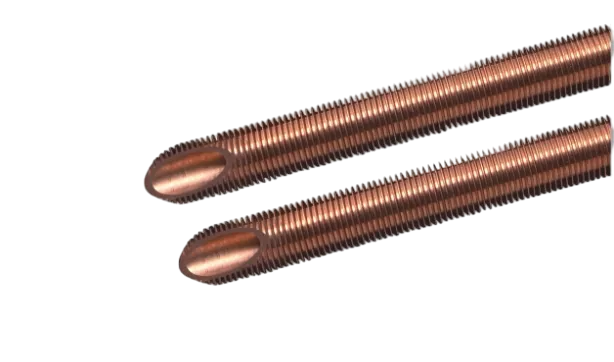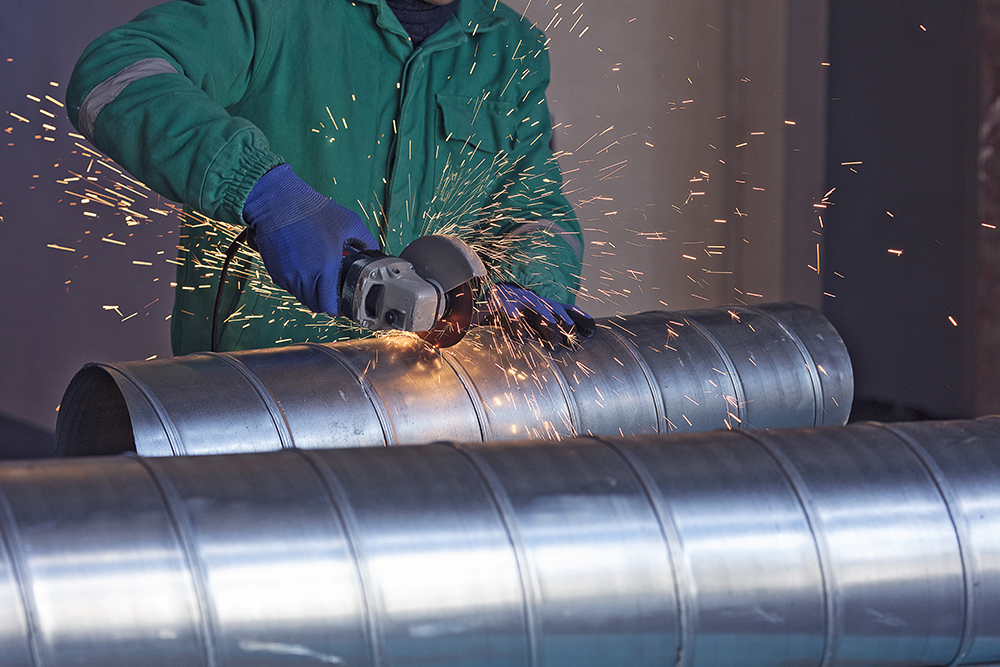Heat exchangers are vital in countless industries, from HVAC and automotive to power generation and petrochemical processing. At the heart of these systems lie two critical components: fins and tubes. While both contribute to heat transfer, their roles and characteristics differ significantly. Understanding these differences is essential for optimizing heat exchanger performance and making informed decisions about system design and maintenance.
What Are Fins and Tubes in Heat Exchangers?
Before diving into their distinctions, let’s define each component:
- Tubes: Tubes are the primary conduits through which a fluid (liquid or gas) flows. They serve as the foundation for heat transfer, allowing energy to pass between the fluid inside and the surrounding medium.
- Fins: Fins are extended surfaces attached to the tubes. Their main purpose is to increase the available surface area for heat transfer, enhancing the system’s efficiency.
Both elements are indispensable, but their specific functions and designs depend on the type of heat exchanger and its application.
The Role of Tubes in Heat Exchangers
Tubes are the backbone of a heat exchanger. They transport fluids and facilitate the heat exchange process. Depending on the application, tubes can vary in material, size, and configuration.
Key Characteristics of Tubes
- Material Choices: Tubes are made from materials like stainless steel, copper, aluminum, or titanium. These materials are selected based on thermal conductivity, corrosion resistance, and cost.
- Design Flexibility: Tubes can be straight, U-shaped, or coiled to fit different system layouts.
- Primary Functionality: Tubes are essential for transferring heat between the fluid inside and the surrounding medium, such as air or another fluid.
Types of Tubes in Heat Exchangers
- Plain Tubes: Basic tubes with no additional surface enhancements. These are used in systems where heat transfer demands are minimal.
- Finned Tubes: Tubes equipped with fins to increase heat transfer efficiency. These are common in applications where maximizing thermal performance is crucial.
The Role of Fins in Heat Exchangers
Fins complement tubes by improving the heat exchange process. They enhance the overall surface area exposed to the surrounding medium, such as air, making the system more efficient without increasing its size significantly.
Key Characteristics of Fins
- Surface Area Amplification: Fins dramatically increase the surface area available for heat transfer, enabling faster heat dissipation.
- Material Composition: Fins are often made from materials like aluminum or copper, known for excellent thermal conductivity.
- Customization: Fins come in various shapes, including straight, spiral, and serrated, tailored to specific performance requirements.
Types of Fins in Heat Exchangers
- Straight Fins: These are the simplest type and are ideal for moderate heat transfer needs.
- Spiral Fins: Designed for enhanced airflow and heat dissipation, often used in air-cooled systems.
- Perforated Fins: Include small openings to improve airflow and turbulence, increasing heat transfer efficiency.
Key Differences Between Fins and Tubes
- Functionality: Tubes are the primary channels for fluid flow, while fins enhance the heat transfer process by increasing surface area.
- Placement: Tubes are integral to the core structure of the heat exchanger, whereas fins are external attachments.
- Material Use: Tubes typically require sturdier, corrosion-resistant materials, while fins prioritize thermal conductivity and lightweight properties.
- Impact on System Design: Tubes determine the capacity of the system, while fins influence its efficiency and compactness.
Why Both Are Essential for Heat Exchanger Performance
A heat exchanger cannot function effectively without both components working in harmony. Tubes provide the structural foundation and facilitate heat movement, while fins maximize the efficiency of the process by improving heat dissipation. Together, they allow heat exchangers to achieve high performance in a compact, efficient design.
The synergy between fins and tubes in heat exchangers is crucial for achieving optimal thermal efficiency. Tubes enable the movement of fluids, while fins amplify the surface area, making heat transfer faster and more effective. Understanding their roles helps in selecting the right design for specific applications.
Choosing the Right Configuration for Your Application
Selecting the ideal combination of fins and tubes depends on the specific requirements of your application. Here’s what to consider:
- Thermal Performance Needs: High-demand applications may require finned tubes for better efficiency.
- Operating Environment: Corrosive or high-temperature conditions might necessitate specific materials for tubes and fins.
- Space Constraints: Compact systems benefit from finned designs that maximize efficiency without increasing size.
- Budget: Balance material costs with performance requirements to find a cost-effective solution.
Practical Applications
- HVAC Systems: Air conditioning units and heating systems often use finned tubes for efficient temperature control.
- Automotive Industry: Radiators and intercoolers rely on finned tube designs for optimal thermal performance in tight spaces.
- Industrial Processing: Heat exchangers in power plants and chemical facilities use robust tube-and-fin configurations to handle extreme conditions.
Maintenance Tips for Fins and Tubes
- Regular Cleaning: Dust or debris on fins can reduce heat transfer efficiency.
- Inspection for Corrosion: Both tubes and fins should be checked for signs of wear or corrosion, especially in harsh environments.
- Repair or Replacement: Damaged fins or tubes should be repaired promptly to maintain system performance.
Conclusion
Fins and tubes are integral components of heat exchangers, each playing a distinct yet complementary role. By understanding their differences and working principles, you can optimize your system’s performance and select the best configuration for your needs. Whether you’re designing a new system or upgrading an existing one, prioritizing the right balance of fins and tubes ensures efficient, reliable, and cost-effective heat exchange.
For industries that demand high thermal performance, the partnership between fins and tubes remains the key to success. With careful planning and regular maintenance, these components will continue to deliver superior results.










